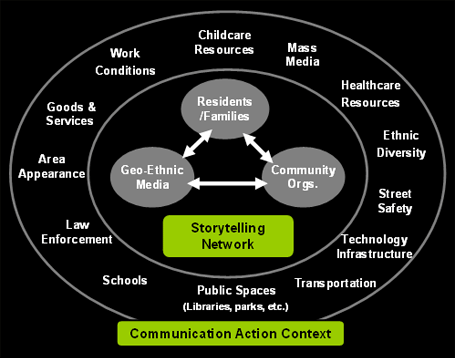Theories of Communication in Economics
Electronic Theory
Social Environment Theory
Rhetorical Theory
We have been discussing how important communication will be for your success in business communication. Communication does not occur haphazardly. Nor does it happen all at once. It is more than a single act. It is a dynamic, transactional (two way) process that can be broken into different phases. To have a better understanding of the process of communication, we need to look at different theories of it.
Electronic Theory
One very influential theory is called the mathematical or electronic theory of communication. This idea emphasized the technical problems of transmitting a message from a sender to a receiver. It uses the language of, electronics. The message begins with an information source, the mind of the sender (writer or speaker), who encodes a message into words and sentences. The message is transmitted as a signal (marks on paper or sound waves) through a channel, where it may be distorted by noise (such as smudged typing or acoustical problems). As a last step, the receiver (listener or reader) decodes the message. Look at the following illustration of this theory.
Message
Communicator Audience
As “sender” as “receiver”
The electronic theory is helpful because it introduces the ideas of senders and receivers and of possible interference. It emphasizes one important aspect of communication: accuracy. Its usefulness is limited, people are not machines. It may be possible to design perfectly an accurate electronic communication system but not a human one. Emphasis on accuracy ignores many other important dimensions of the situation in which we communicate. One may express an idea very accurately, but other may think he does not have the right to talk, so we need to understand other theories too.
Social Environment Theory
Social environment theory is of the social and behavioral scientists. It says that we must consider the situation, the social context in which we will work.
When we work and communicate together, we all participate in a social situation, within that situation; each agrees to assume certain roles – such as “compromiser,” “initiator,” “or “encourager” – based on our part in the activity.
We each have a certain status prescribed officially, such as our job title. We need to understand the rules, or the “culture,” of the environment in order to communicate: both the official rules – such as company policies and practices – and those unwritten rules regarding to whom, how, and when, and for how long it is appropriate for us to communicate within a certain organization. Look at the following illustration of this theory.
Message
Communicator Audience
As “sender” as “receiver”
Within a certain environment
Social environment theory is helpful because it adds the important dimension of the specific social situation. Too often, inexperienced business people neglect to take into account role, status and rules when they communicate. A nicely tailored message may still fail to achieve its objective if you write to the wrong person at the wrong time.
Rhetorical Theory
Third set of theorists add more dimensions to our understanding of the communication process: communication is not linear, but circular; not just sending a message to be received, but producing a response; not static, but dynamic.
Rhetorical theorists provide an important addition to a communication model for business communicators.
Many people in business get so much absorbed in the accuracy of their message and appropriateness of the situation that they forget the third crucial variable, producing the desired response form their audience. The importance of response in business communication is illustrated in the following figure—which incorporates the ideas of accuracy (from the collective theory) and situation (from the social environment theory).
This model is circular, not linear.
Message
Communicator Audience
Response
In fact, perhaps the most important difference between business communication and other forms of communication is this circular quality: your business communication effectiveness depends on the result you achieve. How can you achieve desired response? That’s what the rest of this course will be about. You will learn not only how to be more correct and accurate, and how to be more sensitive to the situation, but also how to identify your audience’s needs in order to become a better communicator. Virtual University




